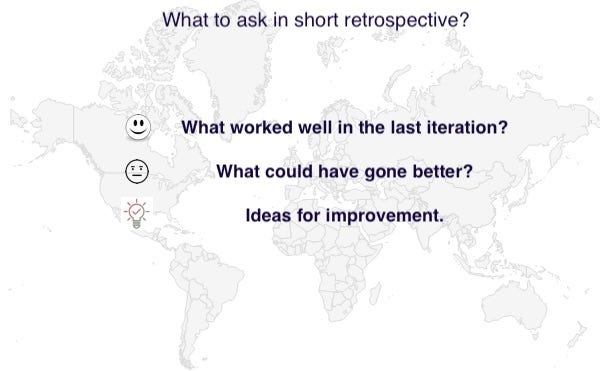Trying to improve productivity when you now have everyone working remotely? I have managed remote teams while at Google for ~10 years and facilitated over 300 retrospectives at various offices. I hope that some of these findings help you optimise your teams.
Sunlight is the best disinfectant: I normally plot an “Energy Siesmagraph” to capture the energy flow between two geographically distributed teams as part of a retrospective in a project. Shown above is a project in death spiral with communication breakdowns, contentious design sessions, low morale, disrespect for each others opinions impacting productivity big time. How to address them? I hope that some of these findings help you optimise your teams.
PRIORITISE RESPONSES TO REMOTE TEAM
Once, in a project that was distributed across continents, we had benchmark tests running to test it against its old version. The owner of the verification process (TL) was based out of Mountain View, and his inputs were binding. The team agreed on some keywords to tag those emails. A quick scan and TL responded to incoming tagged mails first before heading to sleep. This helped with the speed of decision making and blockers were not waiting for a full 12 hour cycle.

Try and introduce these changes one at a time. That way you get to see what works and importantly give room for teams to embrace and own the new concept.
DO YOU NEED MEETINGS FOR WHAT IS BETTER WRITTEN?
Challenge the value-add of every activity and artefact (from status meetings — both virtual or face to face meetings to policies…) Do they really add value?Think about what goes on at a status meeting that can’t be put in a document beforehand? If you are paying your engineers $200K/year, I am sure you can do a back of the envelope calculation to find out how much money you are burning per second or per status meeting.
Since our goal is to reduce waste, avoid face to face for what can be easily written.
- Pull meetings together when people need to solve problems or make decisions together. Have a clear focus and don’t move away in tangents. Don’t forget to track Action Items (AI) in your tracking sheet post meeting.
- Have a clear focus and don’t move away in tangents. Don’t forget to track Action Items (AI) in your tracking sheet post meeting.
- Consider running a tool that scans your teams’ calendar to see how many meetings you attend and cut back on muda (waste).
- To detect waste try a ROTI (Return On Time Invested) activity at the end of each meeting. Ask everyone to rate 1 to 5 for how much value they got from the meeting(1=bad, 5=very good); then report the aggregate as a percentage (e.g. team got 63% value for time invested). Keep track of this number per meeting and once you have a few, call for a short retrospective to understand why a few meetings scored so low vs high and work on ways to improve your meeting focus.

- Drive change by creating a goal for your team meetings to be more effective with a higher ROTI number. When you encounter dips in ROTI, (or just specific tasks that didn’t work via written form), make sure that those don’t get dropped — add them to your next in-person discussion to make sure they get resolved.
- Mark calendar times when you think you make most progress and block such hours as make-time so that no one schedules meetings without checking with you.
ALLOW TEAMS TO REFLECT ON THEIR SUCCESSES & FAILURES
You’ve now eliminated the parts that don’t need the in-person component (muda), so you’re left with just the things that do, so you can have quick, focused in-person sync/standup.Remote daily sync/stand-ups are necessary.
Why? Not having the daily syncs, has hurt teams in many areas right from terminology consistency not just in documentation, but api naming, wrong assumptions made, dependencies not understood well, poor testing and integration.- If you can’t do a daily face-to-face, you can move towards a virtual stand-up for 5–10 minutes every day (literally let everyone stand in front of the camera not sit, that way the meeting ends on time ☺).
- Each team additionally writes an end-of-the-day update. This provides visibility into the development process and acts as a pseudo-handoff before the other teams begin their day.
- During the iteration planning times (weekly or bi-weekly) — a virtual meeting, set apart the first 10–15 minutes for what I call a short retrospective. Ask them the 3 questions outlined below.
 |
| These weekly checkpoints provide continuous feedback. |
To summarise, keeping remote teams organised is a discipline by itself. I shall delve a little deeper into how to run retrospectives to boost productivity in the next article. I will also explain why code milestones are critical, not only for local teams but also for geographically distributed teams to enhance productivity. Stay tuned…
You can reach the author at sudhakar.ramakrishnan108@gmail.com. Learn about future articles, upcoming courses and workshops in my newsletter (low bandwidth)..

Comments
Post a Comment